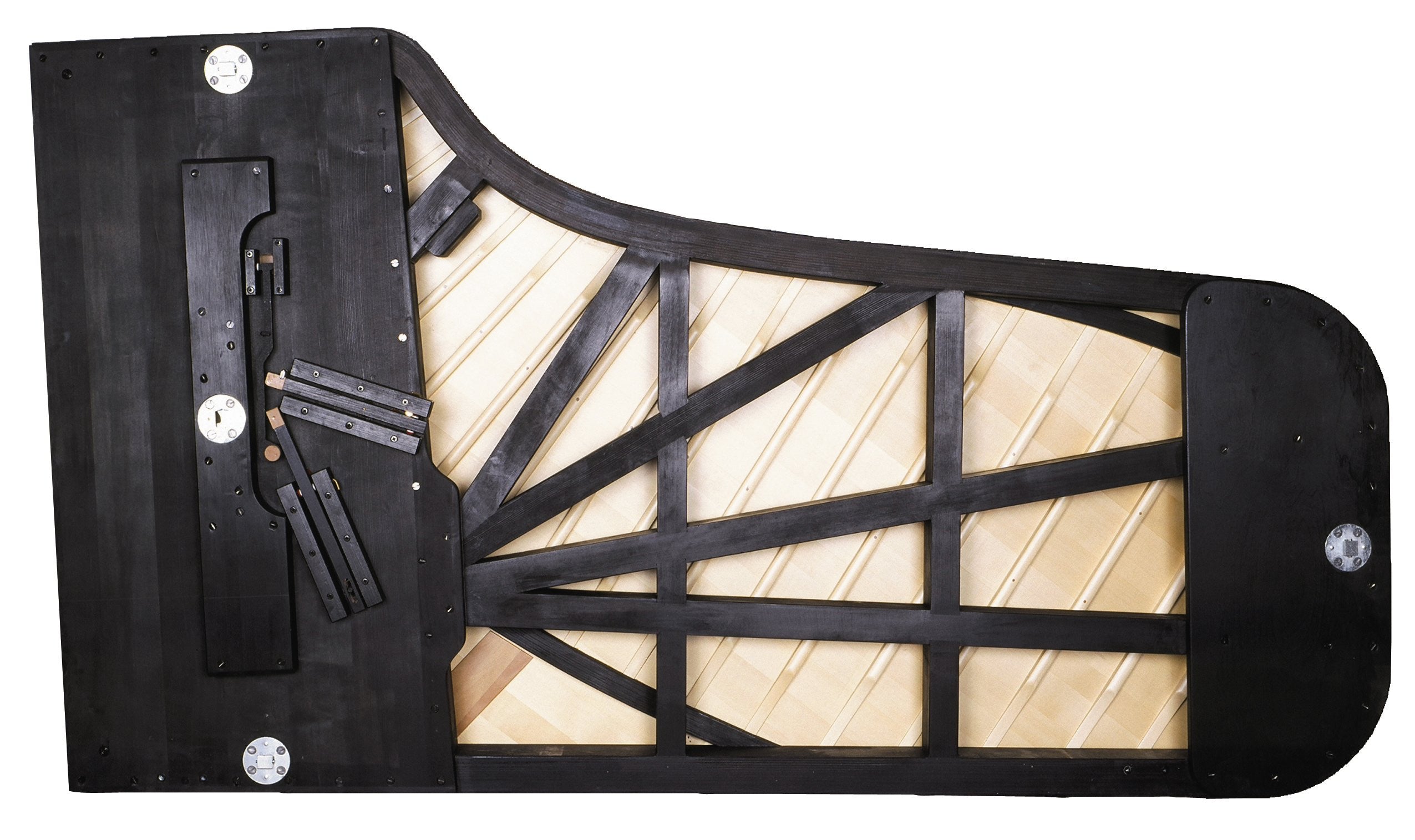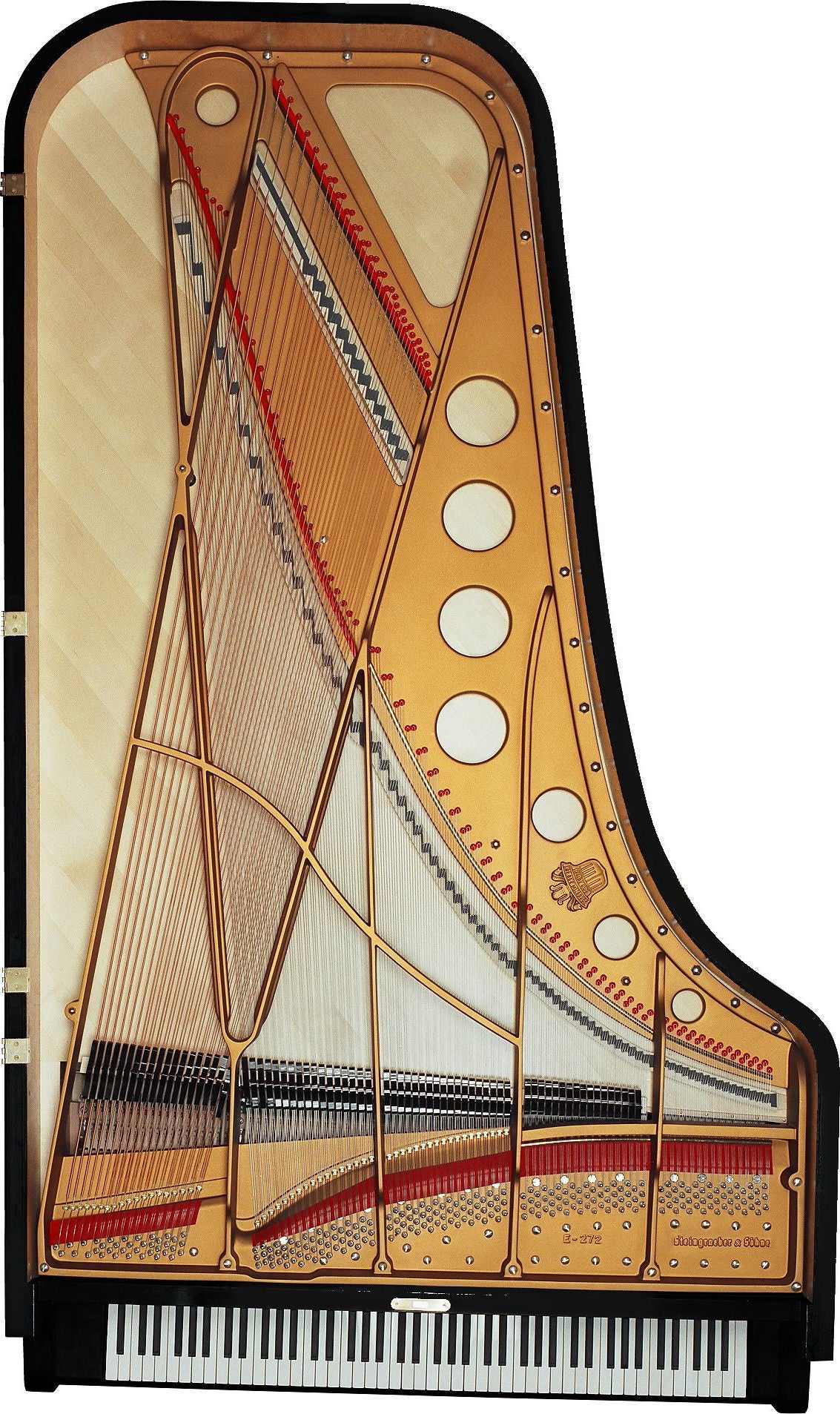



Steingraeber E-272 concertvleugel
Prijs op aanvraag
40+ jaar ervaring
Snelle levering
Pickup available at Bol Piano's Veenendaal
Usually ready in 4 hours

Steingraeber E-272 concertvleugel
Bol Piano's Veenendaal
Inductorstraat 32
3903 KB Veenendaal
Netherlands
| Length (cm) | 272 |
| Width (cm) | 157 |
| Branch | Veenendaal |
Price on request: please Contact for more information.
Listen, Watch and Compare:
The Steingraeber E-272 concert grand piano refers to the construction of its predecessor from 1895 and is appreciated by many pianists as one of the most independent top designs.
Unique features include the sound-reflecting frame, the particularly sound-rich treble and the, according to pianist Cyprien Katsaris, "incredibly pleasant mechanics".
The Parisian 'Le Monde de la Musique' tested 11 grand pianos from major manufacturers and concluded that "For the interpretation of Bach, Mozart and Beethoven, you can hardly find anything better nowadays".
Modern music also comes into its own with this beautiful grand piano.
The goal of the Steingraeber piano builders is to give more clarity, even more shine and a beautiful singing tone. Steingraeber pianos are already praised for this! It goes without saying that the "7-feet-7" (as the D-232 is called in America) also comes with a well-known Steingraeber specialty, the drilled capo d'astro bar. This contributes to structural stability and sustain in the Grand Piano. Thanks to twenty to twenty-five grams of upweight and a downweight of 48 g in the treble and 52 g in the bass side, playing is more fun, lightning fast, or controllable down to the softest pianissimo. Light hygroscopic mineral material and solid ebony black keys complete the complete feel of this grand piano. The D-232 is a thoroughly classic, professional concert grand piano. Special features such as the innovative Phoenix system of patented bridge agraven for energy-efficient transmission are available for all Steingraeber grand pianos.
Top quality wood
The quality of the wood is of vital importance for a piano maker and Steingraeber & Söhne does not take any risks. It is stored at a carefully controlled and constant humidity of 40%. For soundboards, Steingraeber exclusively uses 'Bergfichte•, slowly grown spruce wood with the annual rings close together, which is at least 250 years old. "The soundboard is not only an amplifier, but also the source of the sound. Therefore, the resonance of the wood must correspond to the register of the piano for which it is used. The solid red and white beech wood used for the combs, after entering the factory it is left to rest for another three years before being processed.
Principles of classical keyboard construction
To achieve optimal results, everything is assembled in the studios at Steingraeber & Söhne, down to millimeters:
Soundboard, bridge and cast iron frame are adjusted to the soundboard and not the other way around. The frame is first coated with paint and from the print on the tuning block (which, depending on the model, consists of 20 to 32 layers of beech wood) you can read whether the connection for optimal communication between the different parts is perfect. All this is extremely important because, as they say at Steingraeber: "the energy from the string must be transferred to the soundboard as efficiently as possible. with as little or no loss as possible." That is why even the smallest detail is not forgotten. For example, the pins that hold the strings in place on the bridge are made from exceptionally hard steel by a specialized company. Sticking the comb is also a job that requires special attention and craftsmanship. At Steingraeber it is still manual work that involves a lot of 'Fingerspitzengefühl'.
Manufacturing process
It's not just about top materials and craftsmanship, time is also an important factor, which according to Steingraeber & Söhne is highly underestimated. At Steingraeber & Söhne, the total production time for a piano takes four months, for a grand piano this is six months.
Choose options






